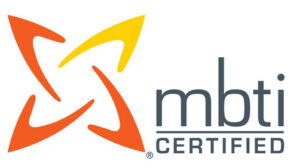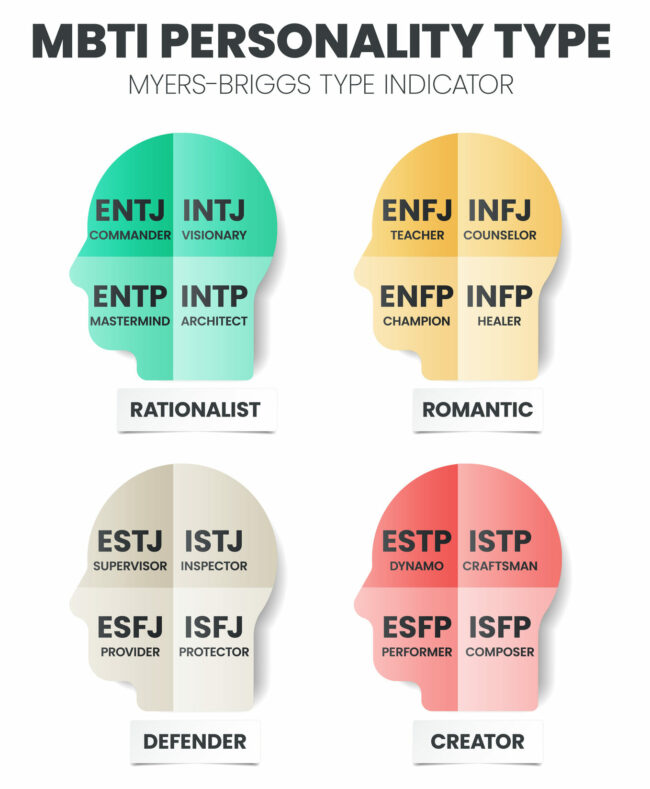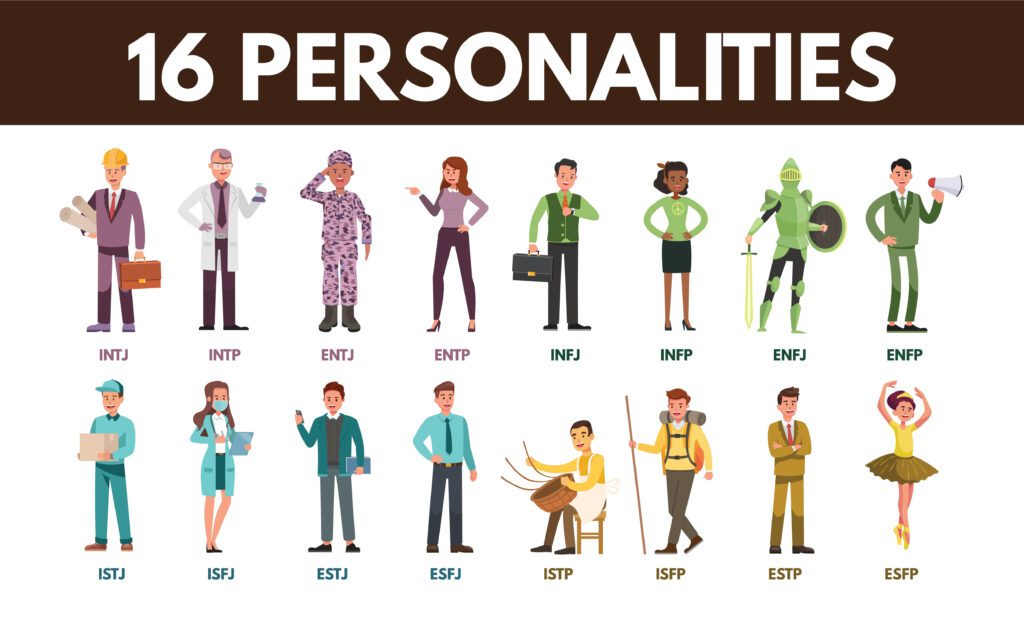Myers-Briggs
Myers-Briggs Type Indicator (MBTI)

+

The purpose of the Myers-Briggs Type Indicator® (MBTI®) personality inventory is to make the theory of psychological types described by C. G. Jung understandable and useful in people's lives. The essence of the theory is that much seemingly random variation in the behavior is quite orderly and consistent, being due to basic differences in the ways individuals prefer to use their perception and judgment.
"Perception involves all the ways of becoming aware of things, people, happenings, or ideas. Judgment involves all the ways of coming to conclusions about what has been perceived. If people differ systematically in what they perceive and in how they reach conclusions, then it is only reasonable for them to differ correspondingly in their interests, reactions, values, motivations, and skills."
In developing the Myers-Briggs Type Indicator [instrument], the aim of Isabel Briggs Myers, and her mother, Katharine Briggs, was to make the insights of type theory accessible to individuals and groups. They addressed the two related goals in the developments and application of the MBTI instrument:
Four Dichotomies
The identification of basic preferences of each of the four dichotomies specified or implicit in Jung's theory.
- Favorite world: Do you prefer to focus on the outer world or on your own inner world?
This is called Extraversion (E) or Introversion (I).
- Information: Do you prefer to focus on the basic information you take in or do you prefer to interpret and add meaning?
This is called Sensing (S) or Intuition (N).
- Decisions: When making decisions, do you prefer to first look at logic and consistency or first look at the people and special circumstances?
This is called Thinking (T) or Feeling (F).
- Structure: In dealing with the outside world, do you prefer to get things decided or do you prefer to stay open to new information and options?
This is called Judging (J) or Perceiving (P).


Your Personality Type
When you decide on your preference in each category, you have your own personality type, which can be expressed as a code with four letters.
The 16 personality types of the Myers-Briggs Type Indicator® instrument are listed here as they are often shown in what is called a "type table."
If you do not know your MBTI type, you may wish to take the instrument.
Type tables can also be used to gather and facilitate analysis of information about teams or specific groups of people.


The goal of knowing about personality type is to understand and appreciate differences between people. As all types are equal, there is no best type.
The MBTI instrument sorts for preferences and does not measure trait, ability, or character. The MBTI tool is different from many other psychological instruments and also different from other personality tests.

DEVELOP
The best reason to choose the MBTI instrument to discover your personality type is that hundreds of studies over the past 40 years have proven the instrument to be both valid and reliable. In other words, it measures what it says it does (validity) and produces the same results when given more than once (reliability). When you want an accurate profile of your personality type, ask if the instrument you plan to use has been validated.
The theory of psychological type was introduced in the 1920s by Carl G. Jung. The MBTI tool was developed in the 1940s by Isabel Briggs Myers and the original research was done in the 1940s and '50s. This research is ongoing, providing users with updated and new information about psychological type and its applications. Millions of people worldwide have taken the Indicator each year since its first publication in 1962.



The Myers & Briggs Foundation. (2014). MBTI® Basics. Retrieved April 24, 2023, from http://www.myersbriggs.org/rest of URL for section cited.
EXPERIENCE DEVELOPMENT WITH CSA
Bio – Gene Eggman
Gene Eggman, VP of Talent Development Services, leads CSA’s Talent Assessment, Executive Coaching and Professional Development programs. Prior to CSA, Gene was the Chief Human Resource Officer for Pace Industries, a privately held manufacturing company consisting of 4500 employees across 15 facilities in the U.S. and Mexico. Gene’s background also consists of 10 years at the Headquarters of Tyson Foods headquarters where he was the Corporate Organizational Development Manager for a $6 billion Food Service Division and a Director of HR Operations overseeing 13 HR Managers in Tyson’s Refrigerated and Deli Food Divisions.
Gene is a Certified HOGAN Practitioner, BEST WORK Practitioner, MBTI Assessment Step I + Step II Instrument Certified, and leads CSA’s partnerships with CommercialSolutions and PRISM Testing. For companies looking to utilize assessment testing as a complement to CSA’s recruitment solutions, Gene can help organizations be more effective at putting the right people in the right roles. For candidates seeking Executive Coaching to take their career to the next level, he can develop a plan to support their personal and professional development.
Gene Eggman’s experience in HR leadership roles in the Consumer Goods industry provides him with the credentials that make Gene and our team at Cameron Smith & Associates trusted advisors in Executive Search and Talent Management.


